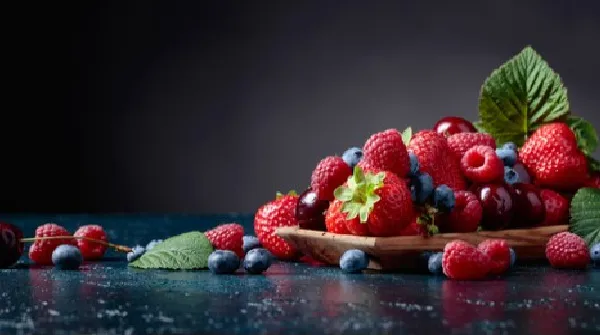Type 2 diabetes is becoming more and more common everywhere. Diabetes is largely influenced by lifestyle factors, especially dietary patterns. Furthermore, specific food groups may prevent the onset of diabetes. This includes diet elements like monounsaturated fatty acids, fruits, vegetables, whole grain cereals, dietary fibre, fish, magnesium, and nuts. Thus, possibly improving insulin sensitivity and its anti-inflammatory effects.

Superfoods: What are they?
Superfoods are items that are extraordinarily nutrient-dense. As a result, they provide a lot of nutrients and very few calories. They are rich in antioxidants, vitamins, and minerals.
How do superfoods affect diabetes?
People with diabetes should routinely take foods like blueberries and tomatoes with deep colours since they can be higher in antioxidants. This superfood may help lower LDL (the “bad”) cholesterol and blood pressure, which may reduce the risk of heart disease.
6 Superfoods for Diabetic
- Whole grains
Oats and other whole grains are rich sources of folate, chromium, magnesium, and B vitamins. These meals are also lower in sugar than other carbohydrates. They also provide a lot of fibre.

Whole oats, quinoa, and whole-grain barley are a few varieties of whole grains. So, instead of eating sweet cereals, consider steel-cut, rolled oats. Obesity, diabetes, and heart disease can all be brought on by simple carbs.
2. Nuts
An ounce of nuts can supply important healthy fats while also aiding in appetite control. Additionally, they provide fibre and magnesium. Omega-3 fatty acids can be found in some nuts and seeds, including flax seeds and walnuts.

Munch on some almonds, cashews, or even pistachios. A quarter cup of nuts daily can reduce your risk of developing diabetes and having a high BMI.
3. Leafy Greens and Vegetables
The vitamins A, C, E, and K, iron, calcium, and potassium are all abundant in dark green leafy vegetables like spinach, collards, and kale. These foods are highly nutritious and low in calories and carbohydrates. For salads, soups, and stews, try adding dark leafy veggies.
Low-calorie vegetables like spinach are also high in magnesium, which is advantageous because magnesium reduces the incidence of Type 2 diabetes.

You are ingesting essential nutrients like vitamin C, vitamin E, and potassium when you consume tomatoes, whether you want them pureed, raw, or in a sauce.
Magnesium and potassium are abundant in black, navy, pinto, and kidney beans, in addition to vitamins. Vegetable fibre helps lower blood sugar levels.
4. Berries
Berries offer the extra benefits of vitamin C, vitamin K, manganese, potassium, and fibre, in addition to being a terrific way to satisfy your sweet appetite.

According to studies, strawberries lessen diabetes-related problems such as nerve damage and kidney illness. Insulin resistance was reduced as more raspberries were consumed.
5. Omega-3 fatty acids
Omega-3 fatty acids may contribute to a reduction in the risk of inflammatory disease and heart disease. Occasionally, “fatty fish” refers to fish that is high in these healthy fats. This group is acquainted with salmon.
Aside from albacore tuna, other seafood high in omega-3 include herring, sardines, mackerel, trout, and sardines. Choose broiled, baked, or grilled fish to avoid the extra carbs and calories that would be in breaded and fried fish.
6. Yoghurt and milk
You may have heard that dairy products like milk and yoghurt can help build bones and teeth. Numerous milk and yoghurt products are fortified with calcium and vitamin D, making them good sources of the vitamin. Try to find yoghurt products with less added sugar and fat.
However, you should consult your doctor before adding anything new to your diet.
Read More: Milk for People With Diabetes
Consult BeatO’s health coach for free and control your diabetes. Download the BeatO app!
Check your blood sugar level with Beato Glucometer today.




